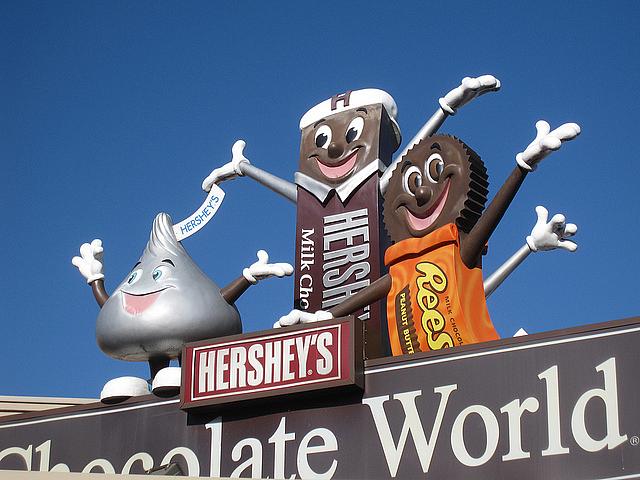Toxic Treats: Your favorite candy may be chock full of lead

As funny as it feels for me to write this, you may not have heard that candy can contain high concentrations of lead.
I was part of a team of reporters in 2004 who broke that news at the Orange County Register. As the American Public Health Association later put it:
[In] April 2004, the Orange County Register in an investigative report published for the first time information that the state of California had been testing for lead in candies for decades but had not informed the public about the high lead levels in many candies, candy wrappers and seasonings (sold as a snack item and consumed as candy) imported from Mexico, the Philippines and other countries.
The APHA started pushing for tougher rules and more research on lead in consumer products. Some of the world’s biggest candymakers stopped making whole lines of candy that had repeatedly proven toxic and committed to better safety standards. And the FDA tightened its rules on the acceptable amount of lead in candy from 0.5 parts per million to 0.1 parts per million.
And yet, it’s 2015, and we are seeing a burst of news stories about lead and cadmium in chocolate. The news was sparked by Oakland consumer advocacy organization As You Sow. The group filed a 60-day notice against The Hershey Co., Mars, and See’s Candies under California’s Safe Drinking Water and Toxic Enforcement Act. Bridge Huber at FairWarning wrote:
The action, which could lead to private lawsuits, brings to 16 the number of manufacturers or retailers put on notice by the consumer group. As You Sow says it has identified 26 chocolate products that exceed California’s threshold “safe-harbor” levels and illegally fail to carry warning labels. A single serving of the chocolate with the highest lead levels contained 5.9 times the maximum allowable dose level set by California’s Office of Environmental Health Hazard Assessment, according to the watchdog group. Those with the highest concentrations of cadmium contained 8.2 times the maximum allowable dose level set by the state, per serving. None carry a warning label.
As You Sow did the same thing that we did at the Register back in 2004. They bought candy and tested it for metals. The group tested 42 different chocolate products, and it found that 26 – or 62 percent – contained metals higher than California’s guidelines. That’s even higher than the detection rate we had when we tested candies at the Register. It would be interesting to see what an even larger sample size would reveal. Has the situation worsened since 2004, or has the problem just gone undetected in American-made candies? (We tested American-made candies, too, but didn’t find lead with the frequency that we found it in candy from Mexico and other countries.)
As You Sow also has gone after Godiva, Dove, Ghirardelli, Lindt, Whole Foods, Trader Joe’s and Kroger.
It’s great to see so many reporters jumping into this story. This is usually one of Gary Schwitzer’s least favorite times of the year, a time when reporters lose all sense of scientific skepticism and write troves of stories about the cardiovascular benefits of eating chocolate. He calls them “cocoa puff stories.” But look at these pieces instead:
Lenny Bernstein at the Washington Post wrote, “If you (like me) have been happily snarfing down chocolate in recent years, secure in the knowledge that those flavonols were at least doing good things for your heart, today is not your day.”
Jenna Lewis at the Apex Tribune wrote, “By and large the point is to watch your chocolate intake rather than trying to give it all up, which is rather unrealistic. But warning consumers about what chocolates really contain could easily remind them when it’s time to stop.”
My favorite headline was on Elizabeth Grossman’s story in Civil Eats: “Heavy Metal Valentine: Is There Lead In Your Chocolate?”
The best comeback from the industry so far came from Hershey.
Hershey’s spokesman Jeff Beckman told Huber, “People have been eating cocoa and chocolate for centuries with no evidence of a single incident of concern regarding these naturally occurring minerals.”
I’m not sure how that statement would stand up to significant testing, but it’s at least a response. Others in the industry have not provided a very convincing explanation.
The National Confectioners Association provided Huber a statement saying, “The U.S. chocolate industry has always made every effort to provide a safe product and continues to do so; cocoa powder and chocolate are safe to eat.”
At Trader Joe’s, spokeswoman Rachel Broderick told Huber, “We take the issues raised in this filing seriously and are working to address them.”
Whole Foods and Lake Champlain Chocolates declined to comment, and, according to Huber, “Other companies named in the notices did not respond to emails and phone calls seeking comment.”
Photo by Kate Hopkins via Flickr.

